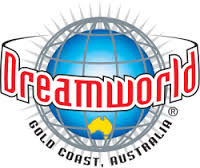


Posted October 28, 2016
The tragedy at Dreamworld this week is obviously devastating for the families, and to a lesser extent, others at the heart of the issue. But one certain thing about it has been the sub-standard communication response. Many lessons can be learnt. This blog post will look at three of them.
 Speed of response
Speed of response
In the age of social media, companies at the centre of crises need to communicate almost immediately. The only way to do this is to have statements ready to send media and other stakeholders before they are needed. Then they can be tailored and sent straight away. Most crisis communication experts say this should happen within the first 30 minutes.
In my estimations, it took Dreamworld about three hours. That means this was being talked about on traditional and social media for three hours before Dreamworld was quoted in any media. This allows the news void to be filled with speculation and comments from detractors, while some people see it as a lack of empathy or because the company has something to hide. I’m sure this wasn’t the case, but it’s all about perception. The statement probably had to be drafted from scratch and cleared by a number of people, including lawyers. This takes too much time.
The other problem by waiting so long to communicate (and the Ardent CEO wasn't seen in person for 24 hours) is that people form their opinion about whether you are a victim or villian early on. If you are not expressing empathy early, you may be seen as a villian and then have the tougher job of trying to change opinions, rather than help shape them. This could be why the Ardent CEO is having a hard time in the media.
Stick to the message (and mean it)
Where there are victims, the number one message has to be empathy. That has been the case from Dreamworld, but a few issues have bought the validity of that into question. I’m sure their empathy is genuine, but once again, perception is everything.
First was the statement by Ardent Leisure CEO Deborah Thomas that all family members had been spoken to personally. She immediately had to retract that when it become clear that one hadn’t been contacted by anyone.
Second was the initial decision to open the park today (even though it was for a memorial and proceeds would go to charity). This gave the perception that Ardent was more focused on profits than helping the families. Again, I’m sure this was not the case, but the perception of many.
Have a clear plan
These mistakes, and others suggest that Dreamworld didn’t have a practical crisis communication plan. For example, any theme park should have statements ready to send out that focus on the death or serious injury to someone on a ride.
There also didn’t seem to be a plan for how victims’ families should be contacted, how long the park should stay shut for, while the media interview skills of those who spoke could have been better. There were times when media questions needed to be deflected (with an explanation), because failure to do that often leads to damaging news angles that are taken completely out of context. These were mainly around financial issues in this case and how the tragedy would affect the bottom line.
If you want to grow your media interview skills for that potential media scrutiny, download my White Paper, ‘5 Steps to Pain-Free Media Interviews,” here.